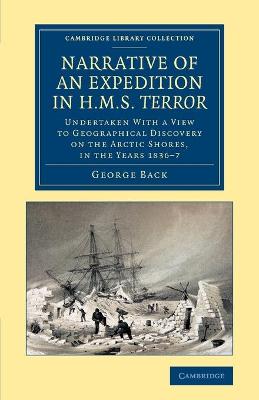Cambridge Library Collection - Polar Exploration
2 total works
John Ross had disappeared while exploring the Northwest Passage in 1829. A lieutenant in the Royal Navy, George Back (1796-1878) had already served with John Franklin on two Arctic expeditions in 1819-22 and 1824-26. He volunteered to lead an expedition to find Ross, setting out in 1833. When Ross returned safely in 1834, Back continued his explorations down the unknown Great Fish River and mapped the Arctic coast westwards, travelling some 7,500 miles in total. Valuable observations on weather, geology, entomology, magnetics and aurora are included as appendices in this 1836 publication. Engravings of Back's own illustrations further enhance the narrative. Although described by some as an opportunist and a weak leader, Back was greeted as a hero on his return and awarded the gold medal of the Royal Geographical Society. The success of this expedition enabled him to head back to the Arctic in 1836.
Having served on expeditions under John Franklin, the British naval officer Sir George Back (1796-1878) had already gained first-hand experience of Arctic peril and survival by the time he was appointed in 1836 to command HMS Terror. His mission was to survey uncharted coastline in the Canadian Arctic, yet Back's ship became trapped in ice near Frozen Strait and was unable to escape for ten months. In this account, first published in 1838, Back lucidly documents the developing crisis, noting the numerous preparations to abandon ship, the deaths of three of his men from scurvy, and the further damage caused by an iceberg after the Terror was freed. Against the odds, the ship managed to reach Ireland in 1837. Naturally, Back gives much credit to the durability of the Terror - originally a bomb vessel from the War of 1812, it had been further strengthened for Arctic service.

